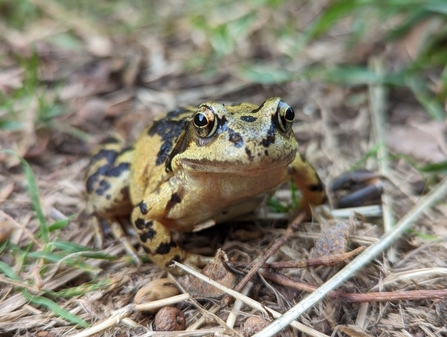Sweet Briar Marshes is a time capsule on the Norwich map. The surrounding landscape has been built up, while the reserve itself has been largely untouched by brick and mortar. The site has a mixed history of being used for both pasture and arable farming, which has led to an impressive assortment of habitats that will be managed for wildlife and people going forward.
This autumn our fantastic volunteer groups have been dredging out various patches of ditch across the reserve. We do this using long bent pitch forks called 'chromes' to scrape away the mud along the bottom of the ditch. This scraping increases the depth in that spot and cuts back the tall growing vegetation, such as sedge, reed, reed sweet grass, and willow herb.


